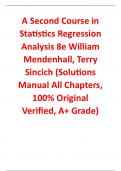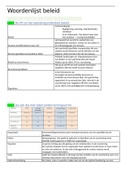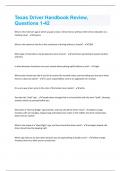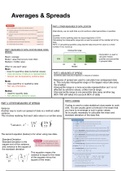Tentamen (uitwerkingen)
Solutions Manual for A Second Course in Statistics Regression Analysis 8th Edition By William Mendenhall, Terry Sincich (All Chapters, 100% Original Verified, A+ Grade)
- Vak
- Instelling
This Is Original 8th Edition of Solutions Manual From Original Author. All Other Files in the market are fake/old Edition. Other Sellers Have changed old Edition Number to new But solutions Manual is old Edition. Solutions Manual for A Second Course in Statistics Regression Analysis 8th Edition ...
[Meer zien]






